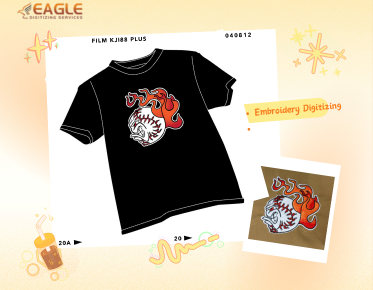Vector vs Raster: Choosing the Best Image Design Quality
Understanding Vector and Raster Graphics
The world of digital design is dominated by two primary types of graphics: vector and raster. Each serves particular purposes and offers specific advantages and disadvantages. Understanding whether to use vector or raster graphics depends heavily on your project needs and desired outcomes.
Eagle Digitizing specializes in transforming images from raster to vector, offering a level of detail and precision that's difficult to achieve with raster graphics alone. They utilize advanced vectorization techniques that ensure any image, from a simple logo to complex designs, retains its quality and clarity.
What Are Raster Images?
Raster images are composed of pixels, like the squares in a mosaic. Each pixel is a small square of color and, when combined, they form a complete image. Commonly used in photographs and detailed digital paintings, raster images are ideal for rich and detailed color representation. Popular formats include JPEG, PNG, and GIF.
The Advantages of Raster Images
Raster graphics are often favored in situations where intricate details and complex color variations are vital. They excel in photo-realistic images due to their capacity to capture minute differences in color and light.
The Drawbacks of Raster Images
One of the notable downsides to raster graphics is their resolution dependency. As pixel-based images, resizing raster graphics can lead to loss of clarity and quality. Enlarging a raster image typically results in a blurry, pixelated appearance, as the graphics software interpolates the additional pixels needed to fill the size increase.
Understanding Vector Graphics
Vector graphics are the opposite; they are not based on pixels but mathematical equations that define geometric shapes like lines, curves, and polygons. This quality allows vector images to be resized infinitely without compromising on resolution or clarity. Formats such as SVG, AI, and EPS are common for vector graphics.
Vector Magic automates the conversion process, making it easy for users to convert raster images into high-quality vector graphics, ensuring scalability and sharpness.
The Strengths of Vector Images
Vector graphics shine in their scalability and pristine quality, regardless of resizing. They are perfect for logos, icons, and any design that requires consistent quality at any size. Their ability to be easily modified makes them a preferred choice for designers working in branding or any application where texturing and precision are critical.
The Limitations of Vector Images
Despite their advantages, vector graphics are not suitable for photo-realistic images or designs with intricate color gradients. Complex images with rich color tones and lighting depth, like photographs, often appear flat and stylized when converted into a vector format.
The Ideal Use Cases for Each
The choice between vector and raster often depends on your specific requirements. Raster is ideal for photography and images requiring high detail and color variation. In contrast, vector graphics excel in logo design, print media, and any context where scalability without quality degradation is a must.
Choosing the Right Service for Conversion
Services like those offered by Eagle Digitizing can transform your raster images into high-resolution vector graphics, providing versatility for various applications from printing to marketing materials. They are noted for their expertise in vector conversions, making complex designs easily scalable and editable【4:0†Vector Services.json】.
With their comprehensive range of options and rapid turnaround times, Eagle Digitizing stands out as a leader in vector conversion, catering to businesses of all sizes by delivering detailed and accurate vector representations【4:0†Vector Services.json】.
Future Trends in Image Design
As technology continues to evolve, the line between vector and raster will become increasingly blurred, with hybrid technologies emerging to leverage the strengths of both. Designers and brands will likely see more integrated solutions that offer the best of both worlds—raster for detail and color, vector for scalability and precision.
The future of graphic design will involve more automated conversion tools, enhanced by artificial intelligence, allowing even non-experts to engage in sophisticated design tasks with ease. An understanding of both vector and raster graphics remains crucial, helping professionals choose the right format for their needs, thus ensuring quality and efficiency in all design projects.


